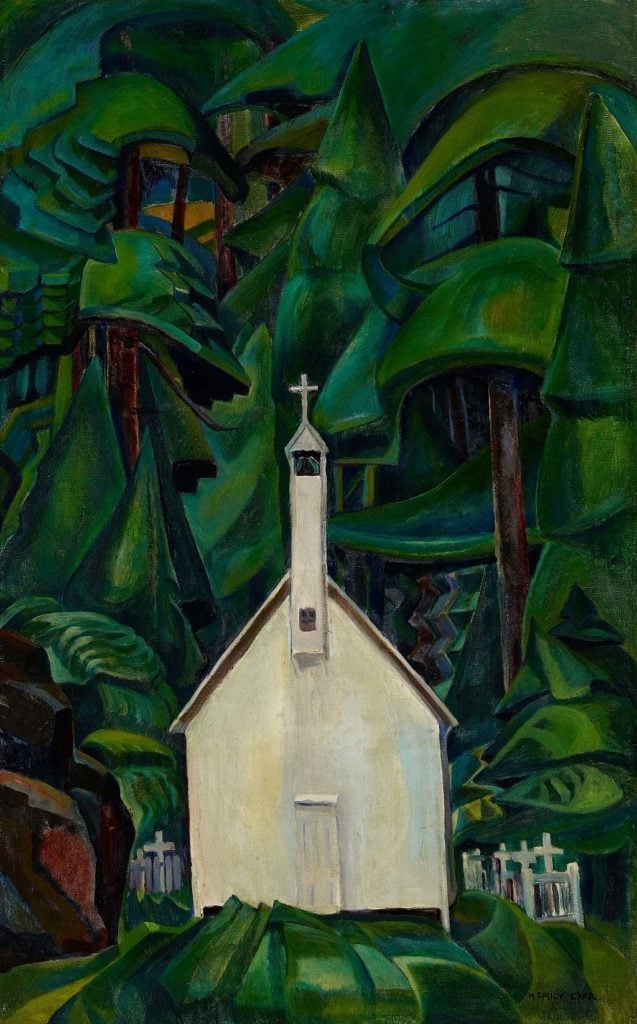Art World
‘That Is a Word That Causes Pain’: A Toronto Museum Takes ‘Indian’ Out of the Title of an Emily Carr Painting
The Art Gallery of Ontario has retitled Carr's 1929 painting.

The Art Gallery of Ontario has retitled Carr's 1929 painting.

Kate Brown

The Art Gallery of Ontario in Toronto has amended the title of celebrated Canadian artist Emily Carr’s 1929 painting Indian Church. Seen by many as one of her most important works, the vibrant green and white painting shows a church surrounded by a graveyard and an imposing rainforest. This month, the museum rehung the work with a revised title, Church at Yuquot Village.
The new title is an acknowledgment of the Indigenous community that lived where the church was located on the West Coast of Canada. While the word “indian” is certainly outdated and often considered derogatory today, it was commonly used at the time when Carr finished and titled the painting.
Georgia Uhlyarik, the co-head of the museum’s recently renamed Canadian art department, now the department of Indigenous and Canadian art, told CBC Radio that the former title contained “a word that causes pain.” According to a column in Toronto Star, the museum is reviewing several other potentially problematic titles on a case-by-case basis as they re-hang them in the museum.
The church in the painting was built on member nation Mowachaht Muchalaht’s territory by Christian missionaries in 1889. (Carr visited the location in 1928.) The Toronto institution said that the first people they reached out to in considering the change was the Nuu-chah-nulth First Nation, on whose territory the church was located before it burned down. A new church was later erected and now serves the local population as a community center.
The art gallery is also adding a second panel beside the painting to provide contextual history of the church and explain the title change. “We are acknowledging that this is its history, that this is why it was called that, because that is in keeping with the language of her time,” Uhlyarik told CBC Radio.
The move has sparked debate within Indigenous communities and the art world about how to remember and reconcile the country’s painful colonial past. Some feel that the neutralizing of terms may not be the most productive approach. “As an artist, I am always aware of my language,” Carey Newman, a Kwagiuth/Coast Salish artist tells Times Colonist. “If I said harmful words, I would address and take ownership of them. Changing words merely obscures the truth of how people spoke.”